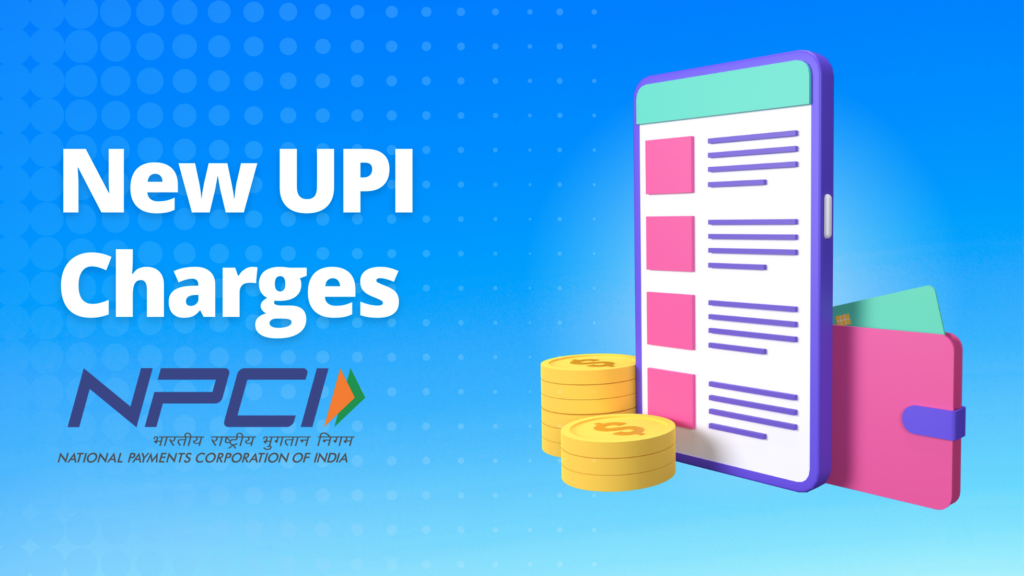I. Introduction
- Explanation of UPI and its growing popularity
- Importance of understanding UPI transaction charges
II. UPI Transaction Charges
- Overview of UPI transaction charges
- Explanation of charges for person-to-person (P2P) transactions and merchant transactions
- How charges vary between different banks and payment apps
- Latest News: Clarification by NPCI on UPI transaction charges from April 1, 2023
III. Payment Apps and UPI Charges
- Google Pay’s UPI transaction charges
- Paytm’s UPI transaction charges
- Are GPAY transactions free?
IV. UPI Transaction Limits
- Explanation of UPI transaction limits
- Maximum limit for P2P transactions
- Latest News: Fee will be only levied above transaction of Rs. 2000 to merchants
V. How Does UPI Earn Money?
- Explanation of how UPI earns revenue
- Overview of the role of the National Payments Corporation of India (NPCI)
VI. SBI and UPI Transaction Charges
- Explanation of UPI transaction charges for SBI customers
- How many UPI transactions are free for SBI customers
- Can you transfer 2 lakh through UPI?
VII. Conclusion
- Recap of UPI transaction charges and limits
- Importance of staying up-to-date with the latest news and changes in UPI transactions
- Final thoughts and recommendations for UPI users
Introduction
In recent years, the Unified Payment Interface (UPI) has emerged as a popular payment system in India. Launched by the National Payments Corporation of India (NPCI), UPI has revolutionized the way people transfer money, pay bills, and make purchases. The ease and convenience of UPI transactions have made it a preferred mode of payment for millions of Indians. However, it is important for users to understand the charges associated with UPI transactions. In this article, we will delve into the details of UPI transaction charges and provide you with the latest information on the subject.
II. UPI Transaction Charges
UPI transactions come with certain charges, which vary depending on the type of transaction and the bank or payment app used. Here’s an overview of UPI transaction charges:
- Person-to-Person (P2P) transactions: Many banks and payment apps offer free P2P transactions on UPI. However, some banks may charge a nominal fee for P2P transactions beyond a certain number or limit. It is important to check with your bank or payment app to understand their specific charges.
- Merchant transactions: For merchant transactions, UPI charges a nominal fee to the merchant’s bank. However, this fee is typically not passed on to the customer. From April 1, 2023, NPCI clarified that the 1.1 percent fee will only be levied above transaction of Rs. 2000 to merchants. This means that UPI transactions below Rs. 2000 will remain free for merchants.
- Variations in charges: The charges for UPI transactions may vary between different banks and payment apps. Some banks or payment apps may offer free transactions up to a certain limit, while others may charge a flat fee per transaction. It is important to check with your bank or payment app to understand their specific charges.
- Latest News: In recent news, NPCI clarified that from April 1, 2023, there will be a nominal fee levied only above transaction of Rs. 2000 to merchants. This move is aimed at promoting digital payments and making them more accessible to small merchants and businesses.
III. Payment Apps and UPI Charges:
Payment apps like Google Pay and Paytm have become popular options for UPI transactions. Let’s take a look at how these apps charge for UPI transactions:
- Google Pay’s UPI transaction charges: Google Pay offers free P2P transactions on UPI, but charges a nominal fee for transactions to merchants. The fee may vary depending on the transaction amount and the merchant’s bank. However, Google Pay has not announced any changes to their UPI transaction charges in light of NPCI’s recent clarification.
- Paytm’s UPI transaction charges: Paytm offers free transactions up to a certain limit for its users. Beyond this limit, Paytm charges a nominal fee for UPI transactions. However, Paytm has not announced any changes to its UPI transaction charges in light of NPCI’s recent clarification.
- Are GPAY transactions free? GPAY is a payment app launched by NPCI itself. Like other payment apps, GPAY also offers free P2P transactions on UPI. However, GPAY charges a nominal fee for transactions to merchants. The fee may vary depending on the transaction amount and the merchant’s bank.
It is important to note that the charges for UPI transactions may vary between different payment apps and banks. It is recommended to check with your bank or payment app to understand their specific charges.
IV. Transaction Limits for UPI:
UPI transactions come with certain transaction limits, which vary depending on the bank and payment app used. Here are some important points to keep in mind regarding transaction limits for UPI:
- Maximum transaction limit: The maximum transaction limit for UPI is Rs. 2 lakhs per transaction. However, some banks and payment apps may have lower limits for their users. It is important to check with your bank or payment app to understand their specific limits.
- Number of transactions per day: Most banks and payment apps have a limit on the number of transactions that can be performed per day on UPI. The limit may vary between different banks and payment apps, and can range from 10 to 20 transactions per day.
- Limits for first-time users: Some banks and payment apps may have lower transaction limits for first-time users. This is done to ensure the security of transactions and prevent fraud.
It is important to keep these transaction limits in mind while making UPI transactions. Exceeding the transaction limit or number of transactions per day may result in the transaction being declined or blocked.
V. How UPI Earns Money:
UPI is a digital payments system launched by the National Payments Corporation of India (NPCI), which is a not-for-profit organization owned by major banks in India. So, how does UPI earn money?
UPI earns money through two main channels:
- Interchange Fees: Interchange fees are charged to the merchants for using UPI as a payment option. The interchange fee is a small percentage of the transaction amount and is charged to the merchant’s bank.
- Value-added Services: UPI offers value-added services like UPI AutoPay, UPI Collect, UPI QR, and more. Some of these services are offered for free, while others are charged a nominal fee.
It is important to note that UPI is primarily a not-for-profit organization and its goal is to promote digital payments and financial inclusion in India. While UPI earns money through interchange fees and value-added services, the fees charged are nominal and mainly cover the costs of operating the platform.
VI. Free UPI Transactions
Most major banks in India offer a certain number of free UPI transactions to their customers. Here are some of the free UPI transactions allowed by major banks:
- State Bank of India (SBI): SBI allows its customers to perform up to 10 free UPI transactions per day. Beyond this limit, a nominal charge of Rs. 2.5 plus GST is levied per transaction.
- HDFC Bank: HDFC Bank allows its customers to perform up to 10 free UPI transactions per day. Beyond this limit, a nominal charge of Rs. 3 plus GST is levied per transaction.
- ICICI Bank: ICICI Bank allows its customers to perform up to 20 free UPI transactions per month. Beyond this limit, a nominal charge of Rs. 2 plus GST is levied per transaction.
It is important to note that these free UPI transactions are applicable only for person-to-person (P2P) transactions and not for merchant transactions. Also, the number of free transactions and the charges may vary between different banks and payment apps.
VII. Other TDR Charges Are Costly Than UPI:
While UPI transactions on Paytm are free, Paytm charges a Transaction Discount Rate (TDR) for transactions made using debit or credit cards, net banking, or other payment methods. The TDR charges are deducted from the transaction amount and vary depending on the payment method used.
Here are the normal TDR charges by Paytm:
- For debit and credit card transactions, Paytm charges a TDR of 1.75% of the transaction amount.
- For net banking transactions, Paytm charges a TDR of 1.50% of the transaction amount.
- For transactions made using Paytm wallet, Paytm charges no TDR.
VIII. Conclusion
In conclusion, UPI has become one of the most popular and widely used digital payment systems in India. As more and more people switch to digital payments, it is important to understand the UPI transaction charges and how they vary between different banks and payment apps.
While UPI is primarily a not-for-profit organization, it earns money through interchange fees and value-added services. However, the fees charged are nominal and mainly cover the costs of operating the platform.
It is important to note that from April 1, 2023, NPCI has clarified that a fee will be levied only above transactions of Rs. 2000 to merchants. This means that person-to-person (P2P) transactions and transactions below Rs. 2000 will continue to be free.
Overall, UPI is a secure and convenient way to make digital payments in India, and with the growing adoption of digital payments, it is expected to become even more popular in the coming years.

